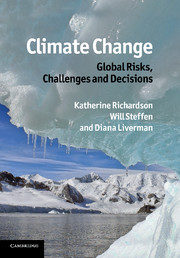Foreword
Published online by Cambridge University Press: 04 April 2011
Summary
An important pinnacle was reached in the journey towards addressing one of the greatest global challenges of our time at the UNFCCC climate change conference (COP15) in Copenhagen in December 2009.
For the first time since the climate change agenda left the offices of scientists and environmentalists, and moved onto the agendas of heads of governments, world leaders on a large scale recognised the need to contain the human-induced global warming to a maximum of 2 °C above pre-industrial levels. On the basis of that recognition, world leaders agreed to take action to meet this challenge.
The path to this recognition was not without obstacles; it was a steep climb, but a climb inspired and fuelled by the increasing force of the scientific findings mounting and developing. In 2007, the Intergovernmental Panel on Climate Change (IPCC) published its Fourth Assessment Report, which gave a thorough and comprehensive review of the science of climate change. This report played an immensely important role in creating global awareness of the urgency of a global response to climate change. However, scientists produce new results and publish new findings every day.
It was thus very timely that the International Alliance of Research Universities (IARU) in March 2009, only nine months before COP15, organised the congress ‘Climate Change: Global Risks, Challenges & Decisions’. A uniquely wide scope of scientific disciplines focusing on climate change was represented at this congress.
- Type
- Chapter
- Information
- Climate Change: Global Risks, Challenges and Decisions , pp. xv - xviPublisher: Cambridge University PressPrint publication year: 2011



